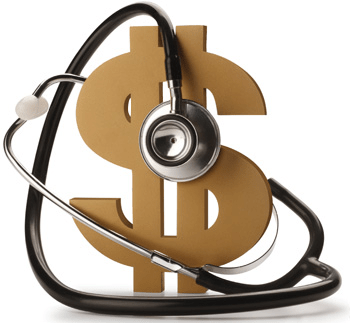
This past Christmas my wife gave me a FitBit. I’m a numbers nerd, so the ability to see my heart rate resting and during exercise, number of calories burned and consumed, how much sleep and the quality of it and how much water I drink all appealed to me. I kind of gave myself a health checkup and I’ve made a commitment to start walking more regularly and getting more sleep. Today, I’m walking on average 40-50,000 steps per week and sleeping between 7.5-8 hours per night. I feel much better than I did three months ago because I gave myself a check up and chose to focus on two specific things for better health.
What would the impact be if we applied this same idea to your business? How did you do last year? Were there things that went really well? Is there anything that if you had to do it over, you would do differently? When’s the last time you gave your business a financial checkup? 2 years ago? Never? If you give your business a health checkup, you will want to see how things are going in these four areas:
1) Profitability– Gross profit and net profit are two key measurements that indicate your overall health. Further, were you more profitable last year than the year before in dollars and percentage of sales? If either of these took a step back from the year before, it might take some further diagnosis to get to the root of the problem.
2) Asset Quality– The number of days sales you have in accounts receivable can determine the quality/collectability of your accounts receivable. Do any need to be written off? Do you have some clients that are chronic late payers? How about your inventory? Is it turning well or do you need to write some off that you’ve had on the shelf for a longer than normal time? If AR and inventory are turning at a healthy rate consistent with prior years, then great! However, if you had some changes, then you might want to see what they are and why.
3)Liquidity– Liquidity can mean a number of things, but most of my clients look hard at their cash balance to see if they have sufficient liquidity to handle payroll, purchases or other operating expenses as they come due. What did your cash balance do year over last year? Was it up or down and by how much? When companies are growing, cash tends to go down because growth requires cash. I don’t consider the availability on your line of credit as cash. I’m old fashioned, I look at the balance in the bank. You may differ. However, most businesses will keep between 1 week and 4 weeks worth of sales in cash. If you are growing and don’t see that slowing down in the future, you may want to consider a line of credit of at least one month’s sales. Many business owners attempt to fund growth with internal cash, profits. However, it’s nice to have a safety if you need it.
4) Leverage– By definition, leverage is the use of borrowed money to increase sales and earnings. While leverage may be beneficial in a boom period, when a recession comes and sales go down, there may not be enough cash to cover operating expenses and interest or principal payments. The amount of financial leverage can differ by industry, but most banks like to see a financial leverage ratio of no more than $3 of debt for every $1 of equity.
If you give your business a financial health checkup, you may see 1 or 2 of these areas you may want to work on to improve the overall health of your business. For more information on this topic or to speak about it with one of our consultants, please get in touch. Here’s to a healthy 2017!






